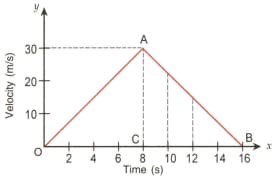A P Shreelatha and Neetu Singh Solutions for Chapter: Motion, Exercise 4: TEST YOURSELF
A P Shreelatha Physics Solutions for Exercise - A P Shreelatha and Neetu Singh Solutions for Chapter: Motion, Exercise 4: TEST YOURSELF
Attempt the practice questions on Chapter 1: Motion, Exercise 4: TEST YOURSELF with hints and solutions to strengthen your understanding. Secondary Physics solutions are prepared by Experienced Embibe Experts.
Questions from A P Shreelatha and Neetu Singh Solutions for Chapter: Motion, Exercise 4: TEST YOURSELF with Hints & Solutions
What does the slope of velocity-time graph indicate?
What is the type of motion of a body if its displacement-time graph is a straight line?
How can you calculate the velocity from displacement-time graph?
Draw the velocity-time graphs for the following situations:
(a) When the body is moving with a uniform velocity.
(b) When the body is moving with a variable velocity and uniform acceleration.
(c) When the body is moving with a variable (non-uniform) velocity and uniform deceleration.
(d) When the body is moving with a variable velocity and variable acceleration.
From the diagram calculate
(i) acceleration
(ii) retardation
(iii) distance covered in first 8 seconds
(iv) total distance travelled by the body and
(v) average velocity in the region ACB.

Plot distance-time graph of two cars moving with uniform speeds of and . Compare the graphs.
Differentiate between speed-time graph and velocity-time graph of a body thrown vertically upward.
